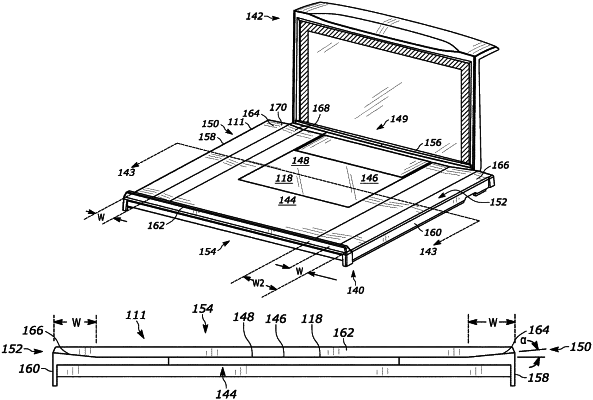| CPC G06K 7/1096 (2013.01) [G01G 19/4144 (2013.01)] | 15 Claims |

|
1. A barcode reader comprising:
a housing having a lower housing portion with an upper surface facing a product scanning region and an upper housing portion extending above the lower housing portion; and
a weigh platter configured to support an object placed on the weigh platter for obtaining a weight of the object, the weigh platter having:
a central region extending in a transverse plane, the central region including a window configured to permit light to pass therethrough, the window having a transparent medium having a top surface extending parallel to the transverse plane;
a proximal edge region adjacent the upper housing portion and having a proximal edge;
a first lateral edge region extending non-parallel to the proximal edge and having a first lateral edge, the first lateral edge region being positioned along one side of the window;
a second lateral edge region, opposite the first lateral edge region, extending non-parallel to the proximal edge and having a second lateral edge, the second lateral edge region being positioned along another side of the window; and
a distal edge region, opposite the proximal edge region, extending non-parallel to the first and second lateral edges and having a distal edge,
wherein:
each of the first lateral edge and the second lateral edge extends at least 2 mm above the transverse plane;
the first lateral edge region includes a first-lateral-edge-region surface extending along at least a portion of the first lateral edge;
the second lateral edge region includes a second-lateral-edge-region surface extending along at least a portion of the second lateral edge;
at least some portion of each of the first-lateral-edge-region surface and the second-lateral-edge-region surface is non-parallel relative to the transverse plane;
the at least some portion of the first-lateral-edge-region surface slopes toward the central region at a first angle of at least 2.5 degrees relative to the transverse plane; and
the at least some portion of the second-lateral-edge-region surface slopes toward the central region at a second angle of at least 2.5 degrees relative to the transverse plane.
|